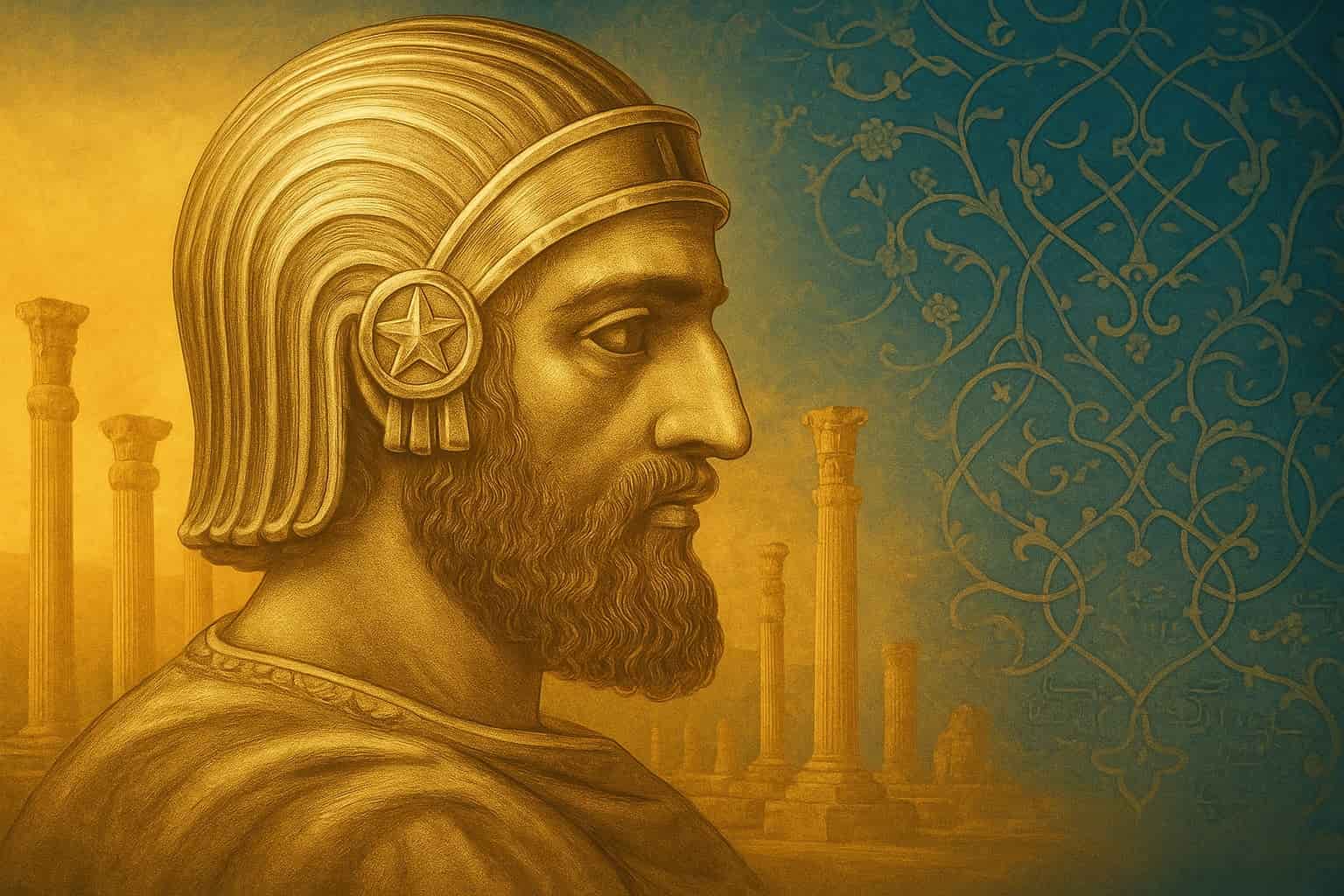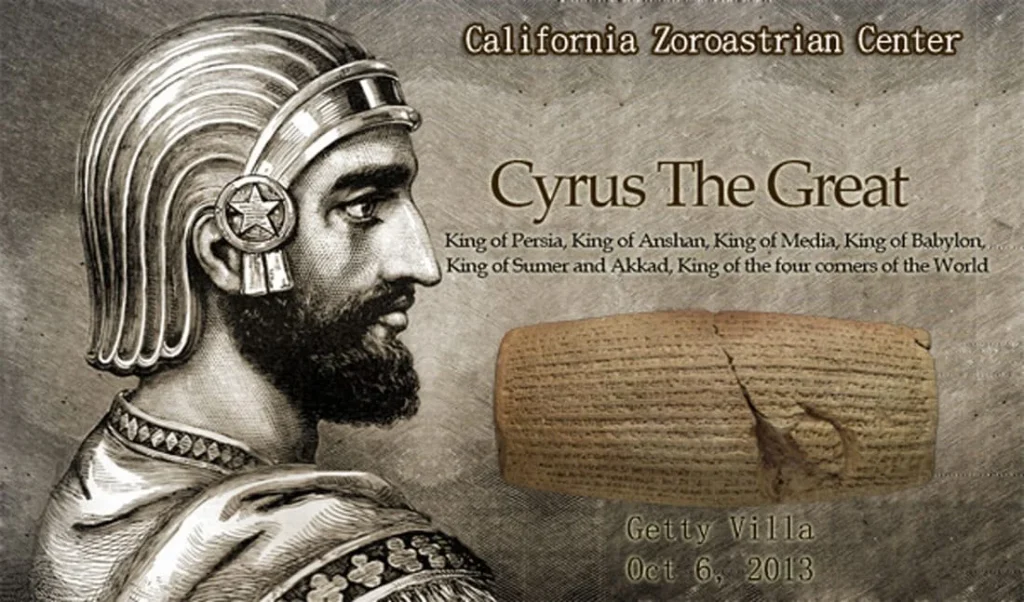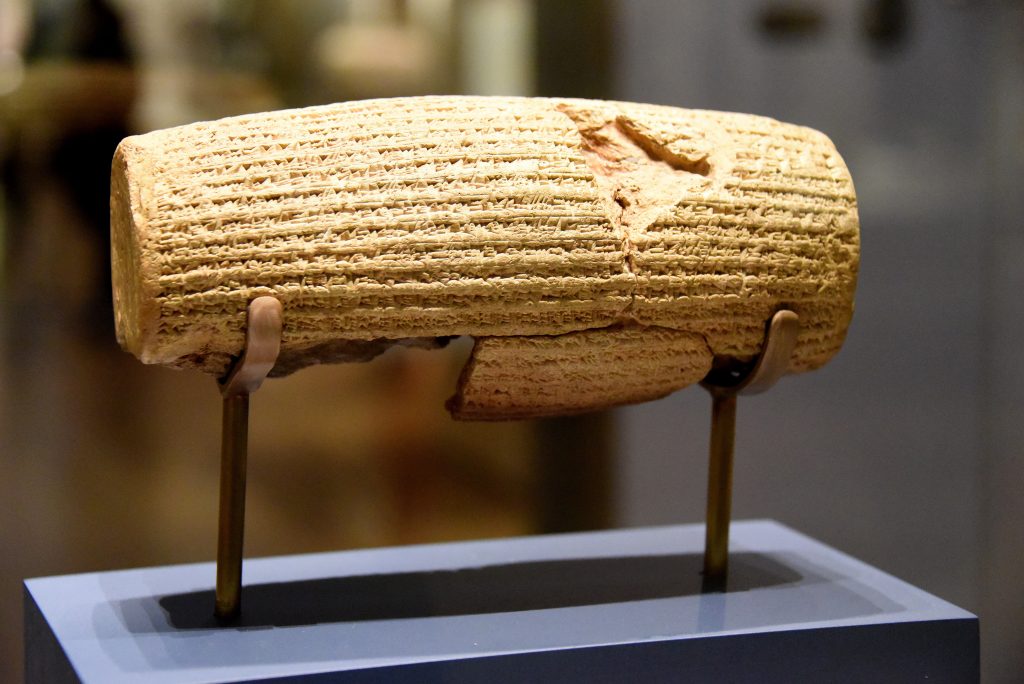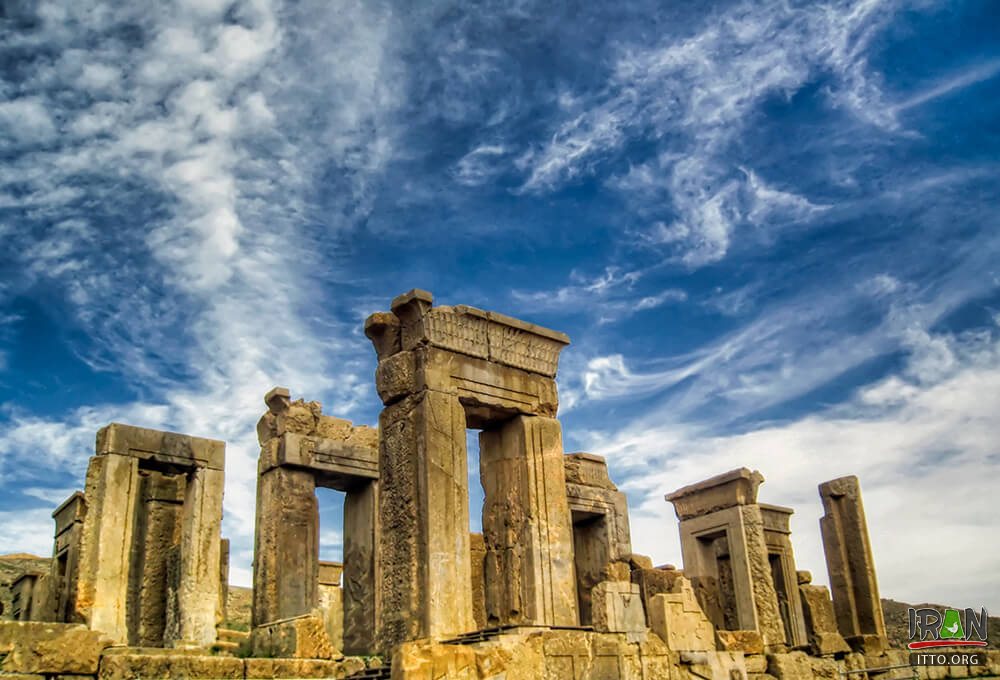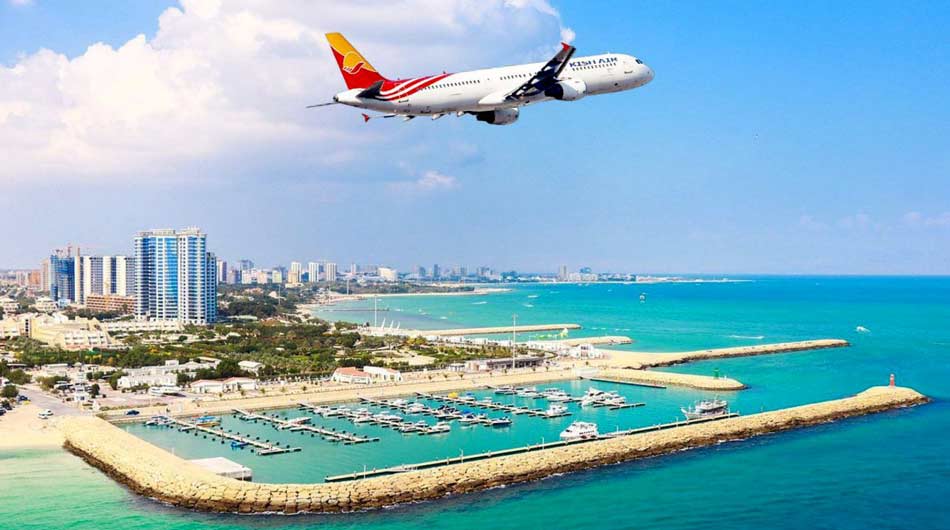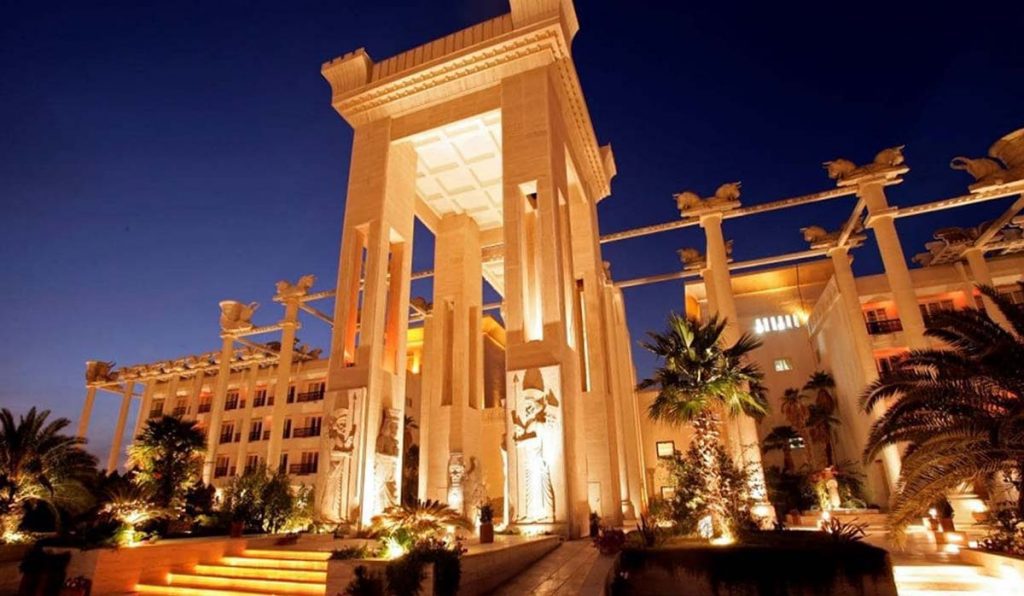From the moment the name Cyrus the Great enters the historical record, it signals the dawn of an era defined by visionary leadership, cultural openness, and statecraft that still shapes the modern world. His founding of the vast Achaemenid Empire not only unified diverse peoples under a policy of tolerance but also laid the groundwork for ideas of human rights that resonate millennia later. Today, echoes of his legacy reverberate across Iran—from majestic ruins on the mainland to the Persian Gulf’s pristine, visa-free islands—inviting travelers to walk the same cultural corridors that once connected ancient Persia to the wider world.
1. Foundations of an Empire: Who Was Cyrus the Great?
Born around 600 BCE in the rocky heartlands of Persia, Cyrus the Great—originally Cyrus II of Anshan—emerged from the relatively modest Achaemenid clan to rewrite the political map of the ancient Near East. Legend weaves a dramatic childhood, but historical evidence points to a shrewd prince who united the Persian tribes under a single banner. By defeating his Median overlord—and crucially absorbing, rather than destroying, the Median administrative structure—Cyrus created a template for expansion rooted in cooperation rather than annihilation.
Cyrus’s genius lay not only in battlefield tactics but in statecraft. After victories over Lydia in Asia Minor and the Neo-Babylonian Empire, he presided over territories stretching from the Aegean Sea to the Hindu Kush. Yet subject peoples—Lydians, Babylonians, Jews, and many others—recorded him as a liberator. The famed Cyrus Cylinder, often dubbed the world’s first charter of human rights, proclaims policies of religious freedom and local autonomy. By allowing conquered nations to retain their customs, he bound them to the Achaemenid core with loyalty rather than fear.
This enlightened approach fostered unprecedented cultural exchange and economic vitality. Royal roads, standardized coinage, and an efficient postal system knit distant provinces into a coherent empire, while regional governors (satraps) balanced local authority with imperial oversight. In Pasargadae—the new capital—Cyrus commissioned gardens, pavilions, and a tomb whose elegant simplicity still inspires. With these innovations, Cyrus the Great transformed a collection of tribes into the first Persian Empire, laying the groundwork for a legacy that continues to shape ideas of governance, tolerance, and cultural identity today.
The Achaemenid Vision: Innovations in Governance, Culture & Tolerance
Cyrus’s successors inherited an empire too vast to micromanage from a single court, so they refined his precedent-setting idea of “rule by partnership.” The realm was divided into provinces called satrapies, each overseen by a governor who spoke the local tongue and understood regional customs. Yet every satrap was balanced by a royal secretary, a military commander, and an independent corps of inspectors—the famed “Eyes and Ears of the King.” This tri-layered structure allowed swift decision-making on the ground while keeping the Great King’s authority unmistakable, forging a prototype for federal administration that many modern states still echo.
Infrastructure knit those far-flung satrapies into a single economic organism. The 2,700-kilometre Royal Road—patrolled, way-stationed, and paved in sections—enabled couriers to gallop from Sardis to Susa in under ten days, a journey that once took weeks. Standardized weights, measures, and the gold daric coin lubricated trade from the Indus to the Mediterranean, while extensive qanat irrigation systems turned arid plateaus into agricultural heartlands. The result was a commercial boom that enriched both imperial coffers and provincial markets, proving that prosperity, not plunder, is the surest path to stable rule.
Cultural policy was equally forward-looking. Rather than impose a single language, the court adopted Imperial Aramaic as a neutral administrative script alongside Old Persian, allowing scribes from Egypt to Bactria to communicate without erasing their mother tongues. Monumental capitals such as Persepolis showcased a fusion of styles—Ionian columns, Egyptian palm capitals, Mesopotamian reliefs—visually enshrining the idea that diversity was the empire’s strength, not its weakness.
Religious tolerance, meanwhile, was codified in deeds as much as proclamations. The Jews of Babylon were permitted to return and rebuild the Temple in Jerusalem; Lydia’s sacred sites remained intact; and Zoroastrian fire altars coexisted peacefully with Mesopotamian ziggurats and Anatolian sanctuaries. Greek historian Xenophon marveled that Cyrus won hearts “by benefaction rather than fear,” while the Cyrus Cylinder still stands as a clay testament to policies of respectful governance unprecedented in the ancient Near East.
These innovations seeded ideas that outlived the empire itself: the ethical mandate of kingship, checks and balances on provincial power, and the conviction that a pluralistic society can thrive under one banner. When later civilizations—from Rome to the modern nation-state—debated how to reconcile unity with diversity, they unwittingly revisited questions first answered in the halls of Achaemenid Persia. In that sense, the vision of Cyrus and his heirs remains not just a chapter in history, but a living blueprint for inclusive governance today.
Echoes Through the Centuries: Cyrus’s Enduring Global Influence
Long after the Achaemenid banners faded, Cyrus the Great remained a touchstone for rulers and philosophers seeking the elusive balance between power and principle. Greek historians cast him as the model “philosopher-king,” and Alexander the Great famously paid homage at Cyrus’s tomb before pursuing his own empire-building ambitions. By studying Cyrus’s strategy of integrating local elites instead of crushing them, Alexander fashioned a multicultural Hellenistic world that echoed Persian precedents more than Macedonian traditions.
Across three great monotheistic scriptures, Cyrus appears less as a conqueror than a divinely guided liberator. The Book of Isaiah hails him as the Lord’s “anointed” who frees the Jews from Babylonian captivity; later rabbinic texts memorialize him as a righteous gentile king. Early Islamic chroniclers, intrigued by the Cylinder’s edict of tolerance, linked Cyrus to the Qur’anic figure of Dhul-Qarnayn (“the Two-Horned One”), a righteous ruler who traveled the world spreading justice. These overlapping narratives helped enshrine Cyrus as a universal archetype of just governance across faith traditions.
The Enlightenment rediscovered Cyrus through Latin and Greek classics. Thinkers like Montesquieu and Jefferson cited him while debating constitutional checks and religious liberty, seeing in his cylinder a proto-charter of rights that predated Magna Carta by two millennia. When the Cyrus Cylinder toured Western museums in the 21st century—culminating in its display at the United Nations—curators called it “the first declaration of human rights,” reigniting global fascination with an ancient clay manifesto that still resonates with modern humanitarian ideals.
Modern Iran, too, draws on Cyrus’s image to project a heritage that transcends contemporary politics. October 29th, unofficially celebrated as “Cyrus Day,” sees thousands gather at Pasargadae to honor the king who once proclaimed, “I will not rule over those who do not wish it.” Whether inspiring national pride, interfaith dialogue, or universal declarations of rights, the voice of Cyrus continues to carry—proof that a statesman’s most enduring empire is the one he builds in human memory.
Experiencing Cyrus the Great Persia Today: From Ancient Ruins to Living Traditions
Walk the wide ceremonial stairs of Persepolis, feel the chisel marks that once glittered beneath imperial processions, and you are quite literally tracing the footsteps of Cyrus’s heirs. Just an hour’s drive away, the limestone tomb at Pasargadae—simple yet monumental—anchors Iran’s first UNESCO World Heritage Site. Together, these ruins transform textbook dates into tangible space: the cool shadow beneath a column drum, the desert-scented breeze over a once-royal garden. They remind visitors that the achievements of Cyrus the Great were not abstractions but lived realities, built to endure millennia.
Yet Persia’s story is etched in living customs as much as carved stone. In Shiraz’s Vakil Bazaar, silken termeh fabrics still gleam beside hand-hammered copper trays, echoing trade networks that spanned the Achaemenid roads. Every spring, families stage the Haft-Sin table for Nowruz, welcoming the new year with symbols of rebirth that pre-date Cyrus and remain central to Iranian identity. Poets recite verses of Hafez under cypress trees; calligraphers swirl ink across paper in scripts descended from Imperial Aramaic; and Zurkhaneh athletes perform an ancient blend of martial art and spirituality to the beat of a kettledrum—traditions that keep the cultural heartbeat of Persia unmistakably alive.
Culinary rituals add further layers of continuity. Saffron-infused chelow kebab, pistachio-studded fesenjan stew, and rose-watered gaz nougat owe their flavors to crops first standardized under Achaemenid irrigation. Tea houses, with stained-glass windows and labyrinthine carpets, serve tiny glasses of black tea sweetened on the tongue with shards of cane sugar—a social rhythm as codified as any royal edict. Food tours, home-cooking classes, and vineyard tastings in the foothills of Zagros open a sensory dialogue between past and present, each bite an edible fragment of history.
Perhaps most compelling is the hospitality known locally as mehmaan-navazi. Whether in a modern boutique hotel or a restored caravanserai, guests are greeted with pomegranates in autumn and cool sherbet in summer—gestures rooted in ancient codes of welcoming strangers along the Royal Road. This seamless blend of antiquity and everyday life means that experiencing Persia today is less about staring at artifacts behind glass and more about entering a living continuum where Cyrus’s legacy threads through bazaars, gardens, poems, and family tables alike.
Following Cyrus the Great to a Visa-Free Island Oasis in the Persian Gulf
The turquoise span of the Persian Gulf once carried caravans of goods, ideas, and legends that fed the ambitions of Cyrus the Great. Two and a half millennia later, one coral-fringed stop on those same waters—Kish Island—offers modern travelers a front-row seat to the cultural continuum he set in motion. Here, the rhythms of Persian trade and hospitality still echo in bustling souks, pearl-diving tales, and sunset dhows gliding past the horizon, inviting you to experience Iran’s heritage without the hurdles of complex paperwork.
Kish’s special economic-free-zone status means most nationalities can step off the plane, have their passports stamped, and enjoy up to 14 carefree days—no prior visa required. Even visitors from countries that normally face stricter entry rules can take advantage of simplified on-arrival procedures, making the island one of the few gateways where Iran’s storied past greets you with open doors rather than embassy queues.
Once you land, the island layers ancient intrigue atop coastal indulgence. Wander the excavated lanes of Harireh’s 1,000-year-old port city, watch the rust-red hull of the beached “Greek Ship” blaze at golden hour, or trace Persian garden geometry in palm-shaded parks—each site a living footnote to the empire Cyrus forged. Luxury resorts, open-air art installations, and a cosmopolitan dining scene fold these timeworn narratives into a contemporary island lifestyle, letting you toggle between history lesson and holiday mode at your own pace.
Booking any of these experiences through KishVisit is just as friction-free: prices are listed in euros, international bank-card check-out is seamless, and every purchase earns you KishCoin, a blockchain-ready fan token you can redeem for on-island perks—from spa upgrades to desert-safari discounts. Behind the scenes, the Kish Blockchain Hub processes millions in crypto transactions each month, so digital-asset holders can pay in their preferred currency and pocket extra rewards for doing so.
In short, if you’re seeking the most convenient place to breathe the same Gulf air that once filled the sails of Cyrus the Great’s trading fleets, Kish Island is your visa-free, future-ready doorway to Iran’s timeless legacy—no royal decree required.
Sleep Like Cyrus the Great: Dariush Grand Hotel Kish
Rising on Kish Island’s eastern shoreline, the five-star Dariush Grand Hotel is much more than a place to drop your suitcase—it is an architectural homage to Persepolis and the wider Achaemenid world that Cyrus the Great set in motion. Fluted columns, winged‐bull capitals, and bas-relief motifs echo the Apadana Hall, while reflecting pools mirror the desert-sky blues celebrated in ancient Persian garden design. The project—conceived by Iranian entrepreneur Hossein Sabet and completed in 2002—cost roughly €185 million and houses 185 luxury rooms and suites, instantly branding itself as a landmark of cultural revival on the Gulf’s coral shores.
Inside, the historical motifs continue without sacrificing modern comfort. Grand lobbies soar beneath skylit domes, cabana rooms open onto palm-lined lagoons, and every suite offers high-speed Wi-Fi, international satellite TV, and 24-hour room service. Guests waking beneath lotus-carved cornices are a short stroll from fine-dining restaurants, an Olympic-size pool, tennis courts, and a private dive center—proof that Achaemenid grandeur and 21st-century leisure can coexist under one roof.
Location amplifies the sense of living history. The hotel sits minutes from the excavated ruins of medieval Harireh, the coral-brick Portuguese Castle, and the island’s main boulevard of murals depicting epic scenes from Persian lore. At sunset, a walk along the promenade frames the silhouette of the beached “Greek Ship” against gilded waters—an accidental reminder that maritime trade has linked Kish to imperial Persia since the days when Cyrus the Great’s fleets plied these same seas.
Booking through KishVisit keeps the legacy seamless. Rates display in euros with transparent taxes; payments clear instantly via international cards or cryptocurrencies; and each reservation credits your digital wallet with KishCoin. Redeem those tokens for spa treatments modeled after ancient Iranian bathhouses, sunset dhow cruises, or even a private tour of the hotel’s Persepolis-inspired reliefs—turning every stay into a tangible dialogue between past accomplishment and future-minded hospitality.
In short, Dariush Grand Hotel distills the spirit of Cyrus the Great into marble colonnades and pillow-top beds, inviting you to sleep amid symbols of an empire while enjoying all the ease of a modern, visa-free island escape.
Conclusion: Cyrus the Great’s Living Legacy
From the windswept plains of Pasargadae to the multicultural corridors of today’s Iran, Cyrus the Great endures as more than a historical figure—he is a timeless blueprint for humane governance, economic ingenuity, and cultural inclusion. His policies of religious freedom, standardized coinage, and far-reaching infrastructure knit a mosaic of peoples into one of history’s most resilient empires. Twenty-five centuries on, travelers can still trace the physical and philosophical routes he opened, whether through the stone grandeur of Persepolis or the warm rituals of Persian hospitality that echo his ethos of respect. In experiencing these living traditions, we rediscover how Cyrus’s ideals continue to shape conversations about rights, diversity, and nation-building across the globe.
Frequently Asked Questions
Who was Cyrus the Great, in a nutshell?
Cyrus II of Persia (c. 600–530 BCE) founded the Achaemenid Empire, uniting diverse peoples from the Mediterranean to Central Asia through policies of tolerance, innovative administration, and a shared economic system based on standardized coinage.
What is the significance of the Cyrus Cylinder?
Often called the world’s first “charter of human rights,” the clay cylinder records Cyrus’s decree allowing conquered peoples—most famously the Jews of Babylon—to return home and practice their faiths freely, setting a precedent for religious liberty in statecraft.
Which historical sites best illustrate Cyrus’s legacy?
Pasargadae (his capital and tomb), Persepolis (ceremonial complex of his successors), and the Royal Road network showcase the architectural, administrative, and logistical genius that defined his reign.
Can I experience Cyrus the Great’s heritage without a complicated visa process?
Yes. Kish Island in the Persian Gulf is a visa-free zone for most nationalities, offering easy access to Iranian culture, historical exhibits, and nearby mainland excursions that illuminate Cyrus’s era.
How does modern travel reflect Cyrus’s vision of seamless exchange?
Just as Cyrus’s gold darics simplified ancient trade, today’s platforms like KishVisit accept international cards and cryptocurrencies, rewarding travelers with digital tokens such as KishCoin that streamline bookings and enhance on-island experiences—continuing his legacy of friction-free commerce.

